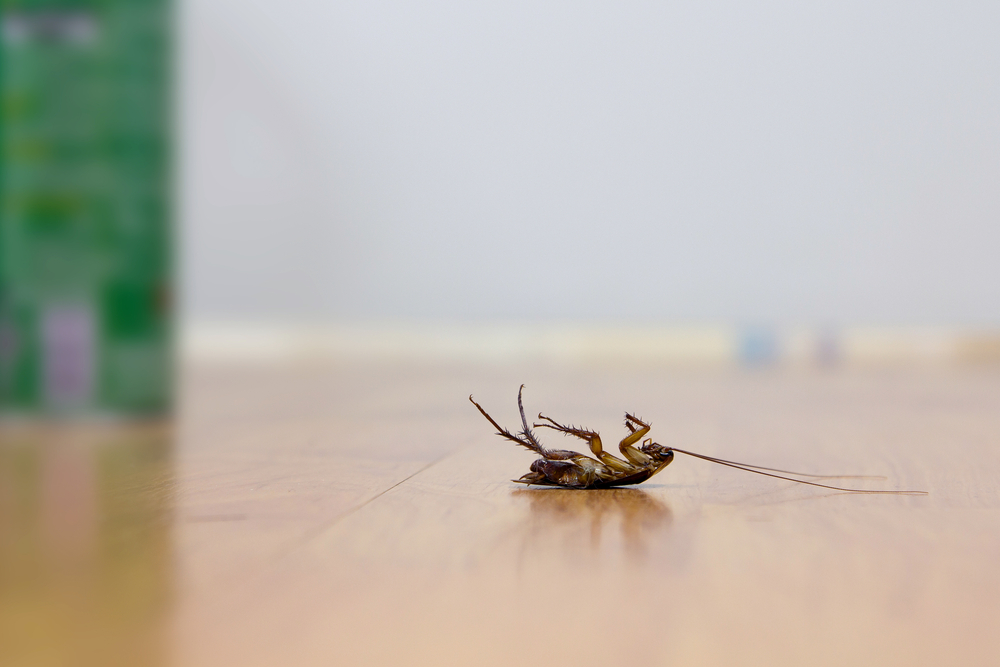Effectively eradicating roaches from your home requires careful consideration of different approaches, each with its own advantages and considerations. This article looks at the different methods of roach extermination. From chemical treatments to physical techniques and eco-friendly solutions, we explore the pros and cons of each. Search online right now to find a local pest control company who can perform any of these various methods for roach extermination.
Chemical Treatments for Roach Extermination
Roach exterminators widely employ chemical treatments as one of the most prevalent methods to combat roach infestations. These treatments primarily involve the application of insecticides, which serve to eliminate roaches directly or impede their reproductive cycles.
According to Find.Answers, the various chemical treatments commonly used by exterminators include…
- Sprays: These sprays are directly applied to roaches or areas where they frequently gather. Upon contact, the spray effectively kills roaches and may leave residual insecticides that continue to eliminate any roaches that come into contact with the treated surfaces.
- Gel Baits: Roach exterminators utilize gel baits to attract roaches and entice them to consume the bait, which contains an insecticide that leads to their demise. These baits can be strategically placed in areas where roaches are known to frequent, and even within cracks and crevices where they tend to hide.
- Insect Growth Regulators (IGRs): IGRs are chemical substances that imitate insect hormones and disrupt the reproductive cycle of roaches. By interfering with their ability to reproduce, IGRs prevent roaches from multiplying, ultimately leading to their elimination.
Physical Extermination Methods
In addition to chemical treatments, roach exterminators often utilize physical extermination methods, which can be highly effective, especially when combined with other approaches.
Several popular physical methods include:
- Traps: One commonly employed method is the use of traps, such as glue traps. These adhesive surfaces are strategically placed in areas where roaches frequently traverse. Roaches become ensnared on the trap and are unable to escape, eventually succumbing to their fate.
- Vacuuming: While it may seem unconventional, using a vacuum cleaner with a HEPA filter can be an effective means of removing a significant number of roaches and their egg cases from your property. Vacuuming helps to physically eliminate these pests and prevent their further proliferation.
- Exclusion Techniques: Roach exterminators can assist in sealing cracks and crevices within your home to thwart roaches from entering and finding shelter. By implementing exclusion methods, they create barriers that prevent roach infestations and enhance long-term prevention efforts.
Natural and Eco-Friendly Roach Extermination Methods
For those seeking eco-friendly and natural solutions in order to protect their home or if they have small children and pets living there, roach exterminators offer several “safer” options. These might not be as effective, but they are worth trying, especially if the problem isn’t severe.
- Diatomaceous Earth: A natural and non-toxic powder derived from crushed fossilized algae. When roaches come into contact with diatomaceous earth, it damages their exoskeletons, leading to dehydration and eventual death.
- Boric Acid: This naturally occurring compound can be utilized as a bait or dusted in areas where roaches are known to frequent. Roaches ingest the boric acid, resulting in their demise.
- Essential Oils: Certain essential oils, such as peppermint and eucalyptus, possess natural repellent properties against roaches. While not directly lethal to the insects, these oils help deter them from entering your home in the first place.
Integrated Pest Management for Roach Extermination
Integrated Pest Management (IPM) is an effective and environmentally sensitive approach that combines practical methods to manage pests. It utilizes current knowledge about pest life cycles and their interaction with the environment to minimize damage economically and with minimal risk to people, property, and the environment, explains the Environmental Protection Agency (EPA).
The IPM process involves several steps. First, an action threshold is set to determine when pest control is necessary. Monitoring and accurate pest identification follow to ensure appropriate actions align with established thresholds, adds the source. Prevention is prioritized by managing lawns or indoor spaces to prevent pest threats. If control becomes necessary, IPM evaluates effective and low-risk methods, such as targeted chemicals or mechanical control, says EPA.
Learn More About Roach Extermination Today!
When dealing with a roach infestation in your home, it’s important to take action as soon as possible to eliminate these unwanted pests. Continue researching online to learn more about the different methods of roach extermination. There are various approaches to consider, such as chemical sprays, baits, and natural remedies.
Each method has its advantages and considerations, so it’s essential to gather information and understand the most effective and safe options. Exploring reputable sources can provide valuable insights to make an informed decision. Effective roach extermination is crucial for maintaining a clean and healthy living environment.



